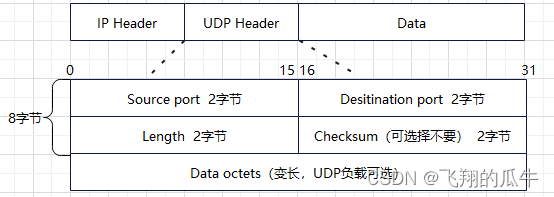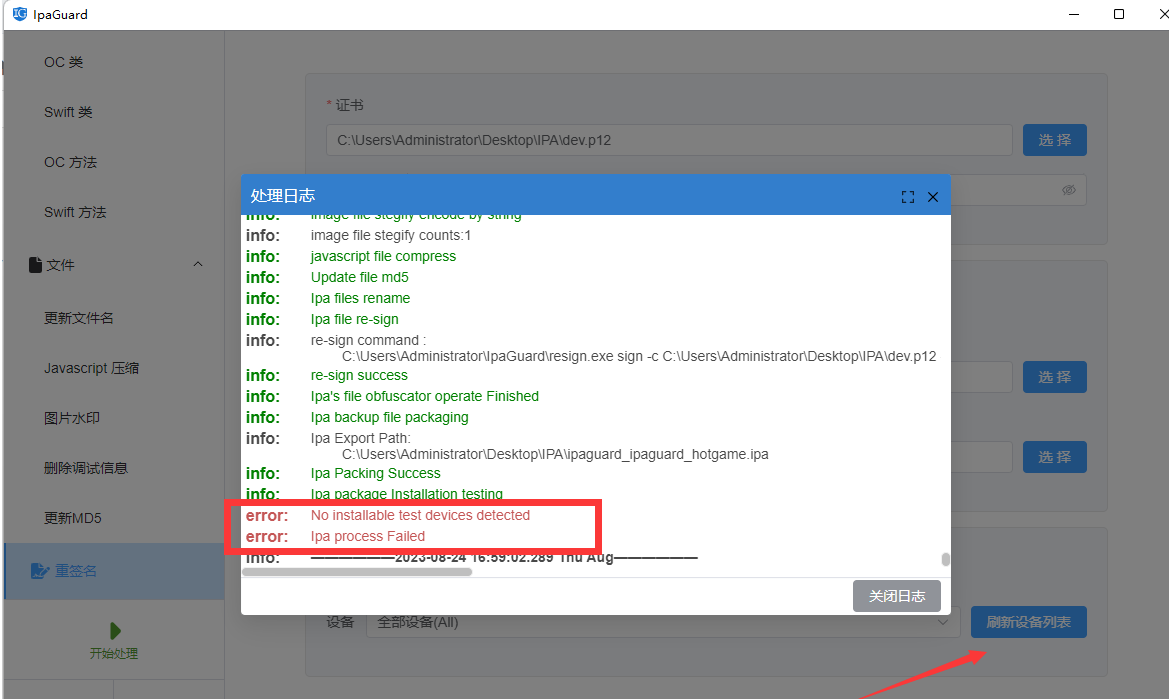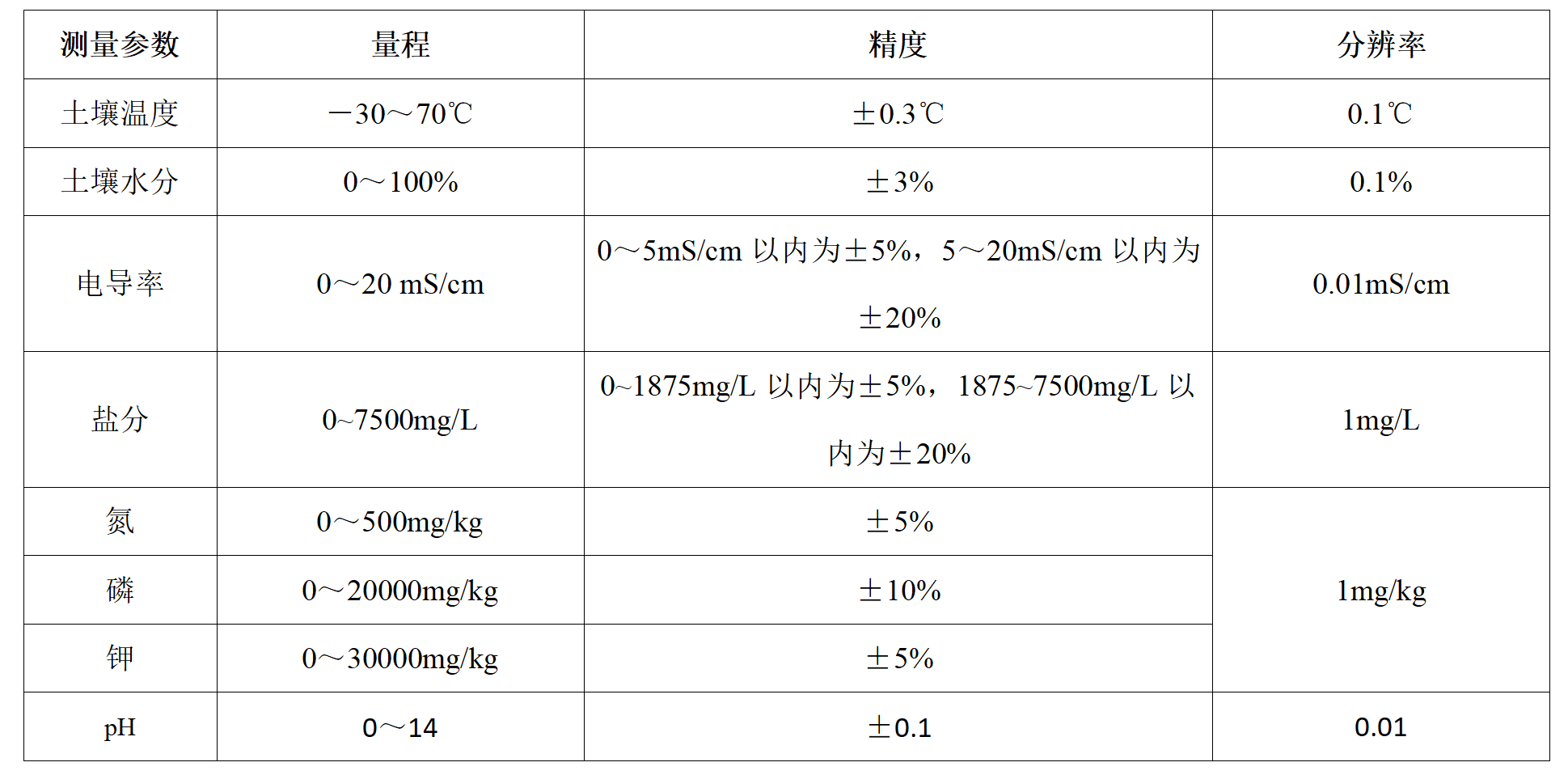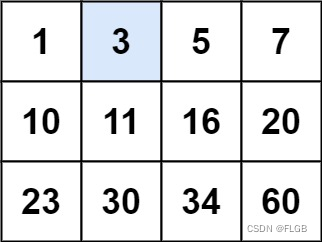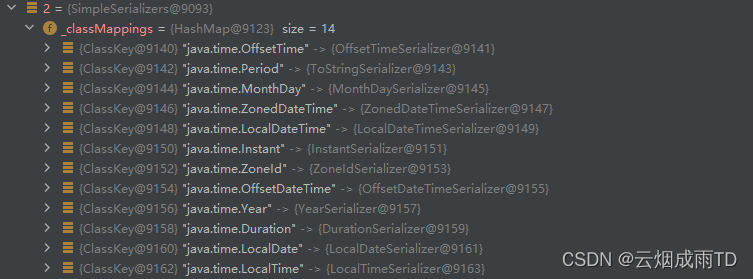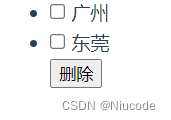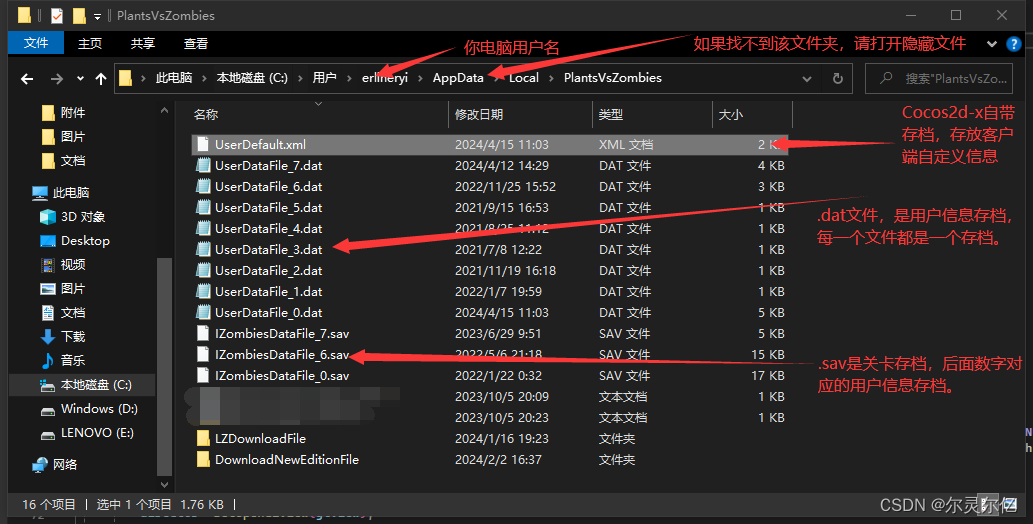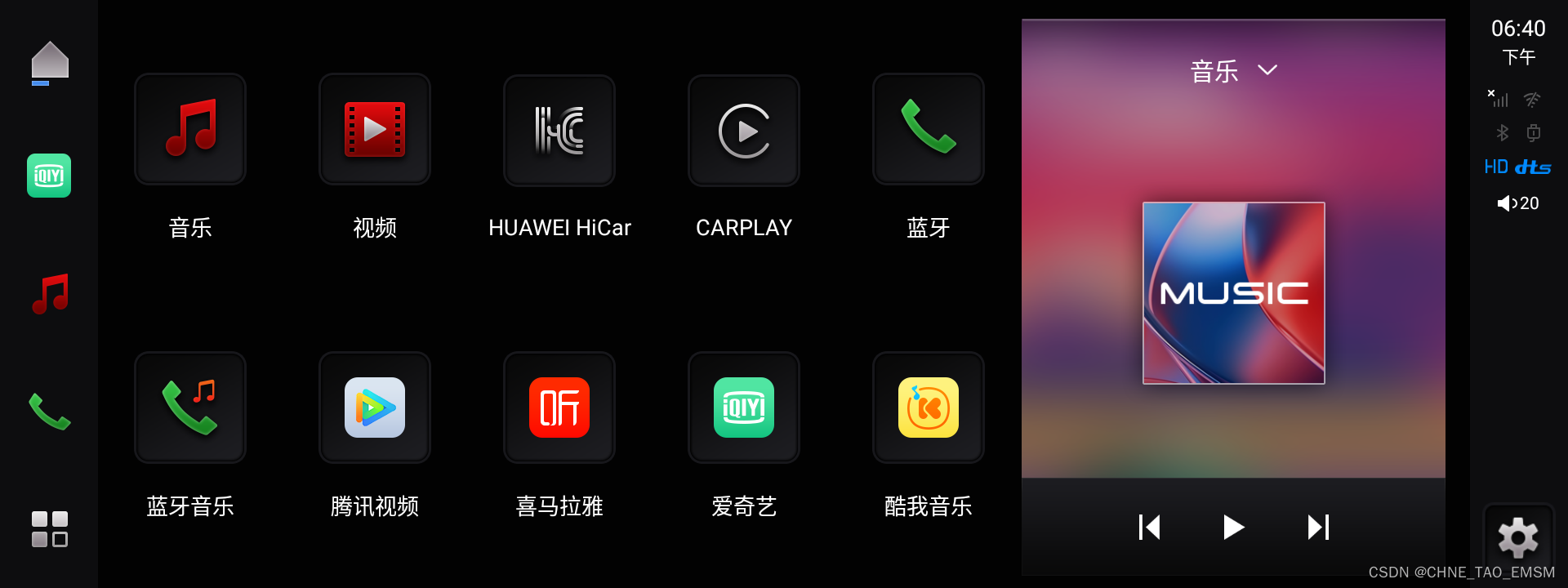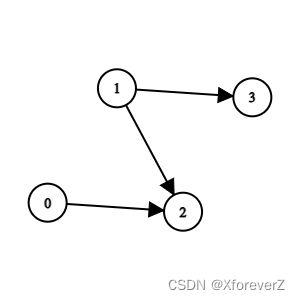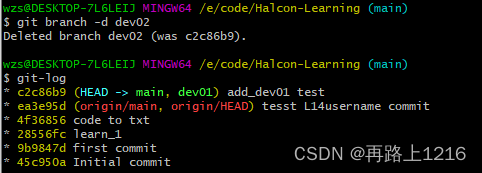一、链表的常见技巧总结
 二、两数相加
二、两数相加
. - 力扣(LeetCode)

class Solution {
public:
ListNode* addTwoNumbers(ListNode* l1, ListNode* l2) {
//利用t来存进位信息
int t=0;
ListNode*newhead=new ListNode(0);//创建一个哨兵节点,方便尾插
ListNode*ptail=newhead;//ptail方便尾插
ListNode* cur1=l1,*cur2=l2;
while(cur1||cur2||t==1)//t==1防止后面有进位没加上
{
if(cur1) {t+=cur1->val; cur1=cur1->next;}
if(cur2) {t+=cur2->val;cur2=cur2->next;}
ptail->next=new ListNode(t%10);
ptail=ptail->next;
t/=10;
}
ListNode*ret=newhead->next;
delete newhead;
return ret;
}
};三、两两交换链表中的节点
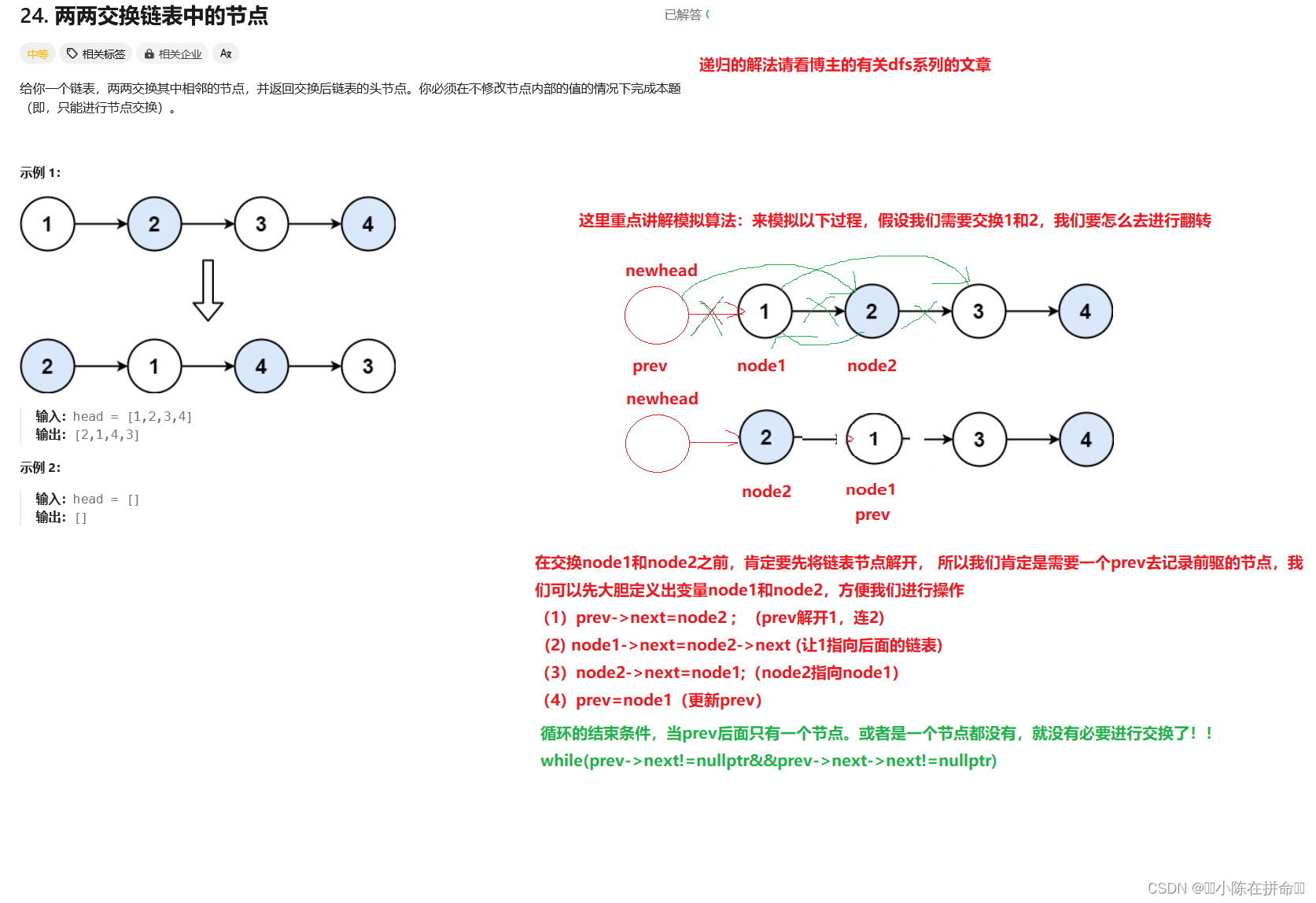
四、重排链表
. - 力扣(LeetCode)

class Solution {
public:
void reorderList(ListNode* head)
{
//方法1,利用一个数据结构将每个节点存起来,通过下标去访问
//方法2, (1)利用快慢指针,找中点 (2) 拆开链表 从中点开始往后翻转 (3)进行合并成新链表
if(head==nullptr||head->next==nullptr||head->next->next==nullptr) return;
ListNode*mid=midnode(head);//找到中间节点
//断开链表
ListNode*l1=head;
ListNode*l2=mid->next;
mid->next=nullptr;
//然后反转2
l2=reverseList(l2);
//合并链表
mergeList(l1,l2);
}
ListNode*midnode(ListNode* head)
{
ListNode*fast=head;
ListNode*slow=head;
while(fast->next!=nullptr&&fast->next->next!=nullptr)//确保后面两步能走
{
fast=fast->next->next;
slow=slow->next;
}
return slow;//此时慢指针指向的就是最小的节点
}
ListNode* reverseList(ListNode* head)
{
ListNode*p1=nullptr;
ListNode*p2=head;
ListNode*p3=head->next;//记录下一个要遍历的点
while(p2)
{
p2->next=p1;
p1=p2;
p2=p3;
if(p3) p3=p3->next ;
}
return p1;
}
void mergeList(ListNode* l1, ListNode* l2)
{
ListNode* temp1,*temp2;
while(l1!=nullptr&&l2!=nullptr)
{
temp1=l1->next;
temp2=l2->next;
l1->next=l2;
l1=temp1;//回到原链表0
l2->next=l1;
l2=temp2;//回到原链表
}
}
};五、合并k个升序链表
. - 力扣(LeetCode)
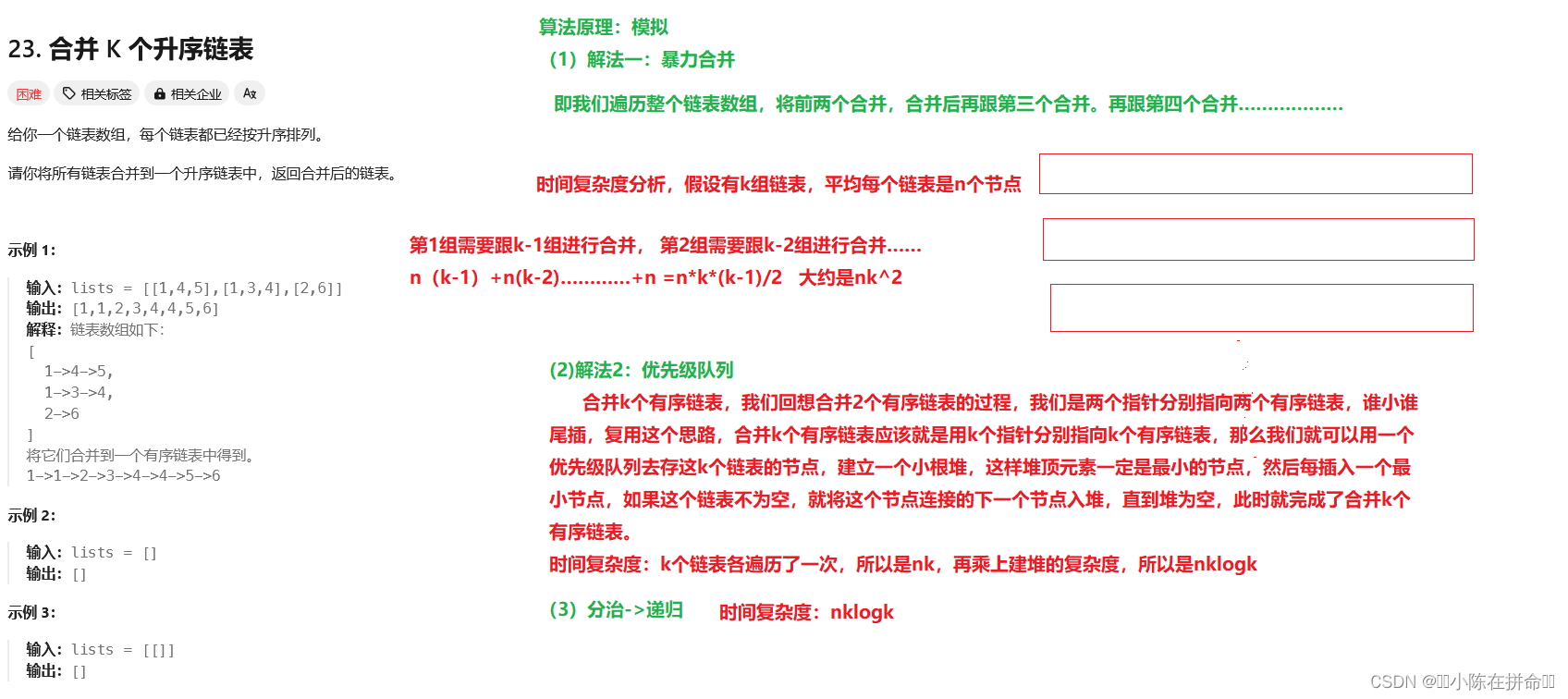
 优先级队列:
优先级队列:
class Solution {
public:
//建小堆需要greater
struct greater //构造一个仿函数
{
bool operator()(const ListNode*l1,const ListNode*l2)
{
return l1->val>l2->val;
}
};
ListNode* mergeKLists(vector<ListNode*>& lists)
{
//建立优先级队列(小堆),每次将堆顶元素插入进去,然后再删除堆顶元素,插入下个位置
priority_queue<ListNode*,vector<ListNode*>,greater> heap;//建立一个小堆
//入堆
for(auto l:lists) if(l) heap.push(l);//因为有可能里面存的是一个空链表
//开始合并k个有序链表
ListNode*newnode=new ListNode(0);
ListNode*ptail=newnode;//用于帮助我们进行尾插
while(!heap.empty())
{
//进行尾插
ListNode*it=heap.top();
ptail->next=it;
ptail=it;//去到下一个位置准备尾插
//删除堆顶元素并将该节点的下一个节点入堆 ,为空就不入
heap.pop();
if(it->next) heap.push(it->next);
}
//此时全部的元素都插入完成了,返回最终的链表
ListNode*ret=newnode->next;
delete newnode;
return ret;
//时间复杂度o(n*k*logk)
}
};分治思想:
//策略,利用递归解决问题,结合归并排序,合并两个有序链表 (利用分治思想)
class Solution {
public:
ListNode* mergeKLists(vector<ListNode*>& lists)
{
int n=lists.size();
return merge(lists,0,n-1);//让merge帮助我们完成整个区间的归并
}
ListNode* merge(vector<ListNode*>& lists,int left,int right)
{
//首先,处理边界情况,如果不存在链表或者是只有一个链表,此时没有必要进行下去
if(left>right) return nullptr;
if(left==right) return lists[left];
//让merge帮助我们归并左右区间
int mid=(left+right)>>1;
ListNode*l1=merge(lists,left,mid);
ListNode*l2=merge(lists,mid+1,right);
//然后开始进行合并两个有序链表
return mergetwolist(l1,l2);
}
ListNode*mergetwolist(ListNode*l1,ListNode*l2)
{
//考虑两个链表为空的情况
if(l1==nullptr) return l2;
if(l2==nullptr) return l1;
//此时两个链表必然不为空,开始进行合并
ListNode*newhead=new ListNode(0);//哨兵节点
ListNode*ptail=newhead;//帮助我们进行尾插
ListNode*cur1=l1,*cur2=l2;//两个指针分别指向两个链表
while(cur1&&cur2)//当两个都不为空的时候
{
if(cur1->val<cur2->val)
{
//此时要尾插cur1
ptail->next=cur1;
ptail=cur1;//更新到下一个位置
cur1=cur1->next;//继续去下一个节点遍历
}
else
{
ptail->next=cur2;
ptail=cur2;//更新到下一个位置
cur2=cur2->next;//继续去下一个节点遍历
}
}
//可能有的链表没有遍历完
if(cur1) ptail->next=cur1;
if(cur2) ptail->next=cur2;
//此时返回到目标的位置
ListNode*ret=newhead->next;
delete newhead;
return ret;
}
};六、k个一组翻转链表
. - 力扣(LeetCode)
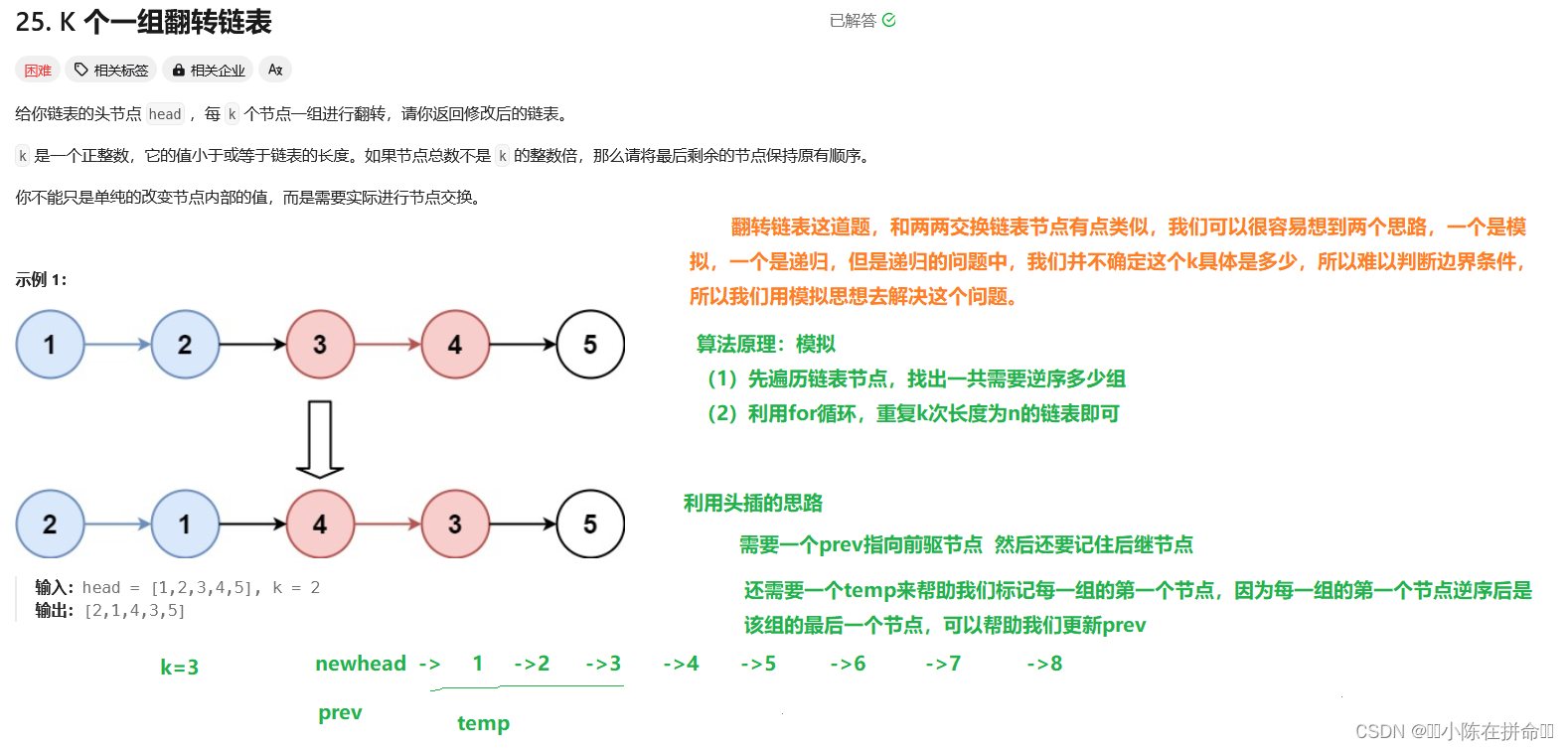
class Solution {
public:
ListNode* reverseKGroup(ListNode* head, int k)
{
int n=0;//记录总数
ListNode*cur=head;
while(cur)//统计节点个数,并推测有多少组
{
cur=cur->next;
++n;
}
n/=k;//看看一共需要几组
ListNode*newhead=new ListNode(0);//创建一个哨兵节点
ListNode*prev=newhead;//记住被头插的点
cur=head;//从head开始进行头插
//翻转n组,每组翻转k个
for(int i=0;i<n;++i)
{
ListNode*temp=cur;
for(int j=0;j<k;++j)
{
//用头插的逻辑
ListNode*next=cur->next;;
cur->next=prev->next;
prev->next=cur;
cur=next;//继续去链表的下一个点
}
prev=temp;//更新prev
}
//循环结束后,将后面的不需要逆序的部分接上
prev->next=cur;
ListNode*ret=newhead->next;
delete newhead;
return ret;
}
};七、旋转链表
. - 力扣(LeetCode)
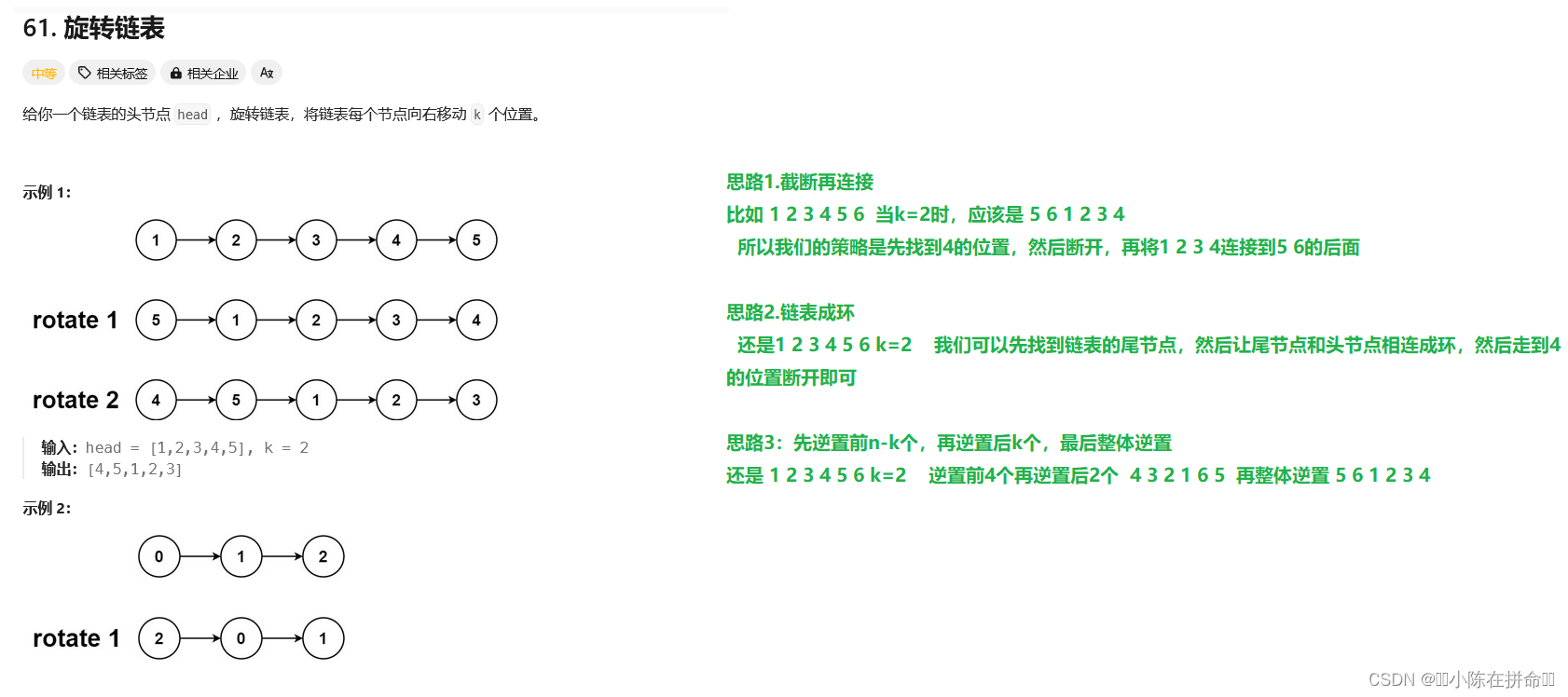
思路1:截断再连接
class Solution {
public:
ListNode* rotateRight(ListNode* head, int k)
{
//让链表成环(闭合成环),然后在指定位置断开
if(head==nullptr||head->next==nullptr||k==0) return head;
int count=1;//数节点数量
ListNode*ptail=head;
while(ptail->next!=nullptr) //找到尾节点,并统计节点数
{
ptail=ptail->next;
++count;
}
int add=count-k%count;//看看具体是翻转几次
if(add==count) return head;//避免不需要翻转的情况
//截断重连
ListNode*cur=head;
while(--add) cur=cur->next; //找到被截断的位置
ListNode*ret=cur->next;
cur->next=nullptr;//断开
cur=ret;
while(cur->next!=nullptr) cur=cur->next;//找到尾节点
cur->next=head;//连接
return ret;
}
};思路2:链表成环,指定位置截断
class Solution {
public:
ListNode* rotateRight(ListNode* head, int k)
{
//让链表成环,然后在指定位置断开
if(head==nullptr||head->next==nullptr||k==0) return head;
int count=1;//数节点数量
ListNode*ptail=head;
while(ptail->next!=nullptr) //找到尾节点,并统计节点数
{
ptail=ptail->next;
++count;
}
int add=count-k%count;//看看具体是翻转几次
ptail->next=head;//头尾相连
while(add--) ptail=ptail->next;
ListNode*ret=ptail->next;
ptail->next=nullptr;
return ret;
}
};思路3:逆置前n-k个,再逆置后k个,最后整体逆置
class Solution {
public:
ListNode* rotateRight(ListNode* head, int k)
{
if(head==nullptr||head->next==nullptr||k==0) return head;
//先逆置前n-k个,再逆置后k个,再整体逆置
int count=1;//数节点数量
ListNode*ptail=head;
while(ptail->next!=nullptr) //找到尾节点,并统计节点数
{
ptail=ptail->next;
++count;
}
int add=count-k%count;//看看具体是翻转几次
if(add==count) return head;
//开始找前n-k个节点
ListNode*cur=head;
while(--add) cur=cur->next;
ListNode*l2=cur->next;//第二个链表
cur->next=nullptr;//断开
ListNode* l1=reverse(head);
l2=reverse(l2);
head->next=ptail;//连接起来
return reverse(l1);//然后整体翻转
}
ListNode*reverse(ListNode* head)
{ //只有一个节点,没什么好逆置的
if(head==nullptr||head->next==nullptr) return head;
ListNode*p1=nullptr,*p2=head,*p3=head->next;
while(p2)
{
p2->next=p1;
p1=p2;
p2=p3;
if(p3) p3=p3->next;
}
return p1;
}
};

